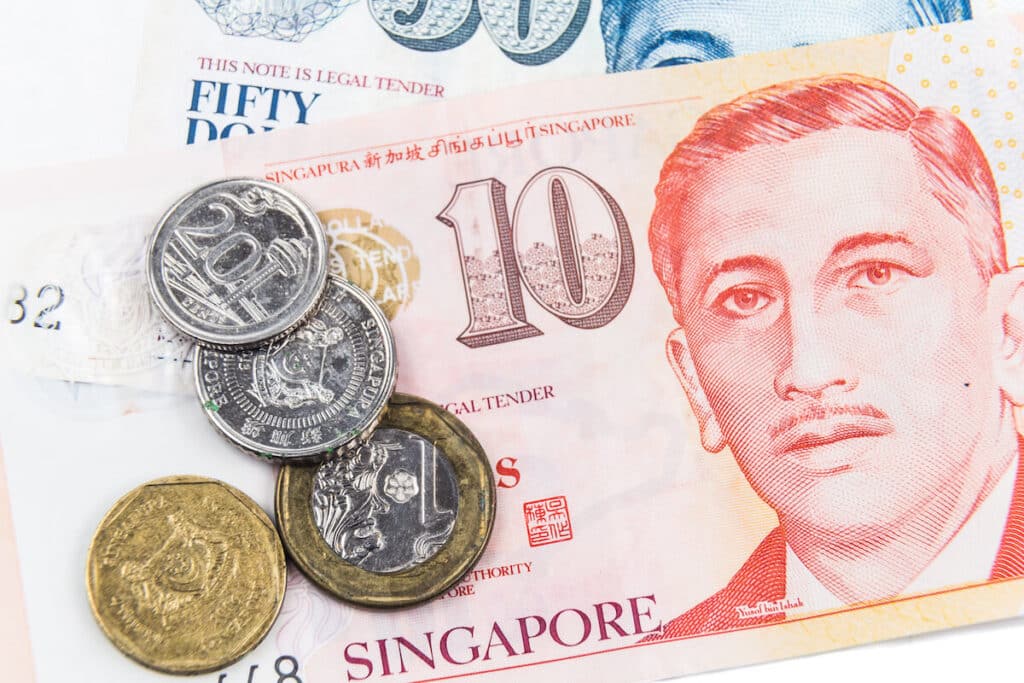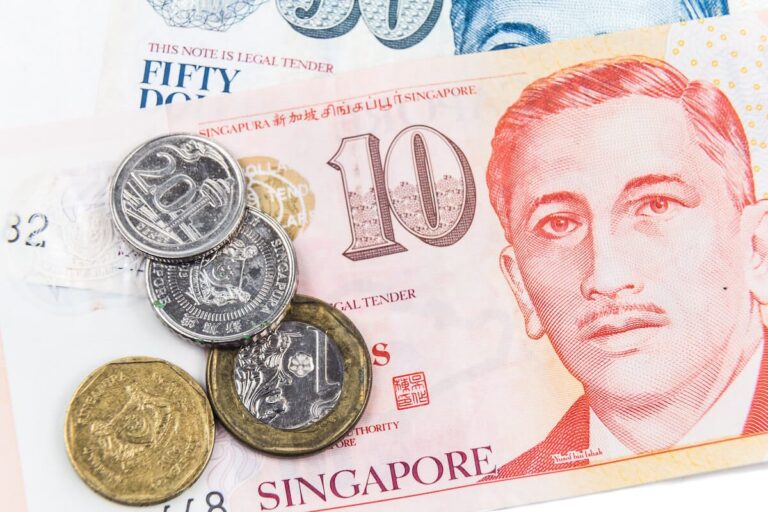
The Singapore dollar (SGD) isn’t just one of the most frequently traded currencies in the world; it’s also renowned for its stability. While it shares similarities with other dollar currencies like the U.S. dollar (USD) or Australian dollar (AUD), the SGD boasts unique characteristics that set it apart. Whether you’re sending money to Singapore, planning a visit, or conducting business, here’s everything you need to know about this remarkable currency.
SGD Currency Basics
The Singapore dollar uses the currency code SGD to distinguish it from other “dollar” currencies, including the U.S. dollar (USD), Canadian dollar (CAD), and New Zealand dollar (NZD). Like these currencies, it is divided into 100 cents and often represented with the dollar sign ($). To avoid confusion, the symbol S$ is sometimes used.
The Monetary Authority of Singapore (MAS) issues SGD in both coin and banknote forms, with denominations as follows:
- Coins: 1, 5, 10, 20, and 50 cents, as well as $1 and $5 coins
- Banknotes: $2, $5, $10, $20, $25, $50, $100, $1,000, and $10,000
To combat money laundering risks, Singapore has been discontinuing high-value banknotes like the $1,000 and $10,000 notes. Additionally, paper banknotes have been replaced with polymer versions that feature advanced security measures.
Send and Receive Money Internationally in the UK with Remitly.
Get started with our free mobile app.
Download
History of the Singapore Dollar
The Singapore dollar was officially introduced in 1967, but the currency’s history extends much further. During its time as a British outpost, Singapore used various currencies, including the Spanish dollar, the Straits Settlements dollar, and the Malaya and British Borneo dollar.
Notably, during the Japanese occupation of Singapore (1942–1945), the military yen became the local currency, earning the nickname “banana money” due to the banana plant illustration on the $10 note. After independence in 1965, Singapore remained in a currency union with Malaysia and Brunei for several years before issuing its own currency.
SGD Currency Today
The Singapore dollar’s strength stems from its robust monetary policies and Singapore’s position as a financial and transport hub. With a GDP of approximately $60,000 USD per capita, Singapore boasts one of the world’s strongest market economies. The SGD’s stability is underpinned by strict anti-corruption measures and substantial foreign reserves.
Unique Facts About the Singapore Dollar
It Has One of the Highest Sovereign Credit Ratings Worldwide
Singapore’s AAA credit rating from Fitch places it among the most financially stable countries globally, a distinction shared with only ten nations.
SGD Currency Is Fully Backed by Assets
Unlike many fiat currencies, the Singapore dollar is entirely backed by gold, silver, and other external reserves, ensuring its stability.
It Was Once Pegged to the U.S. Dollar
Initially pegged to the British pound, the SGD shifted to the U.S. dollar in 1967 before transitioning to a mix of currencies in the 1970s.
It Is Pegged to a Secret “Basket of Currencies”
The SGD’s value is tied to an undisclosed set of currencies from major trading partners, allowing it to float within a controlled band monitored by MAS.
It Is Interchangeable with the Brunei Dollar
Thanks to a long-standing agreement, the Singapore dollar and Brunei dollar remain interchangeable and are legal tender in both countries.
Understanding the Singapore Dollar Exchange Rate
The SGD’s value fluctuates relative to other currencies. To get the most accurate rates for international money transfers, use an online converter or check with financial institutions. For instance, you can easily find the value of 1 SGD against euros (EUR), Chinese yuan (CNY), or British pounds (GBP). If travelling to Singapore, note that you must declare amounts over $20,000 upon entry.
Sending Money Around the World From Singapore
As a global financial hub, Singapore attracts international workers and businesses, while many Singaporeans also live abroad. Choosing the right money transfer service is key for secure and affordable transactions. With Remitly, you’ll enjoy transparent rates, fast transfers, and the ability to track your funds in real-time.
FAQs
What is the value of 1 SGD in GBP or EUR?
Exchange rates fluctuate daily. Use a reliable currency converter for real-time updates.
Can I still use $1,000 and $10,000 SGD banknotes?
High-value notes like these are being phased out and are rarely circulated.
Is the SGD interchangeable with other currencies?
The SGD is interchangeable with the Brunei dollar but not with other dollar currencies like USD or AUD.
What security features are on SGD banknotes?
Polymer banknotes include features like see-through panels, raised textures, and colour-changing elements for security and durability.
How can I send money to Singapore?
Services like Remitly offer fast, transparent, and secure international money transfers.
